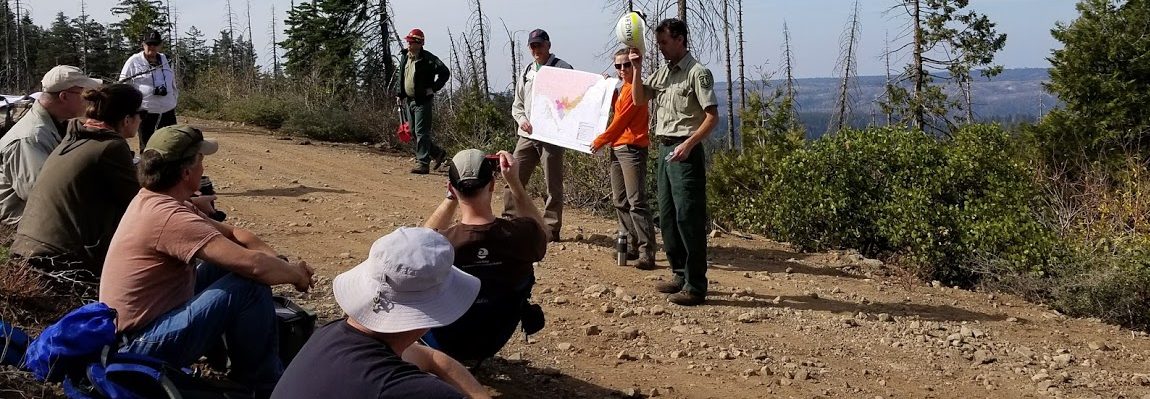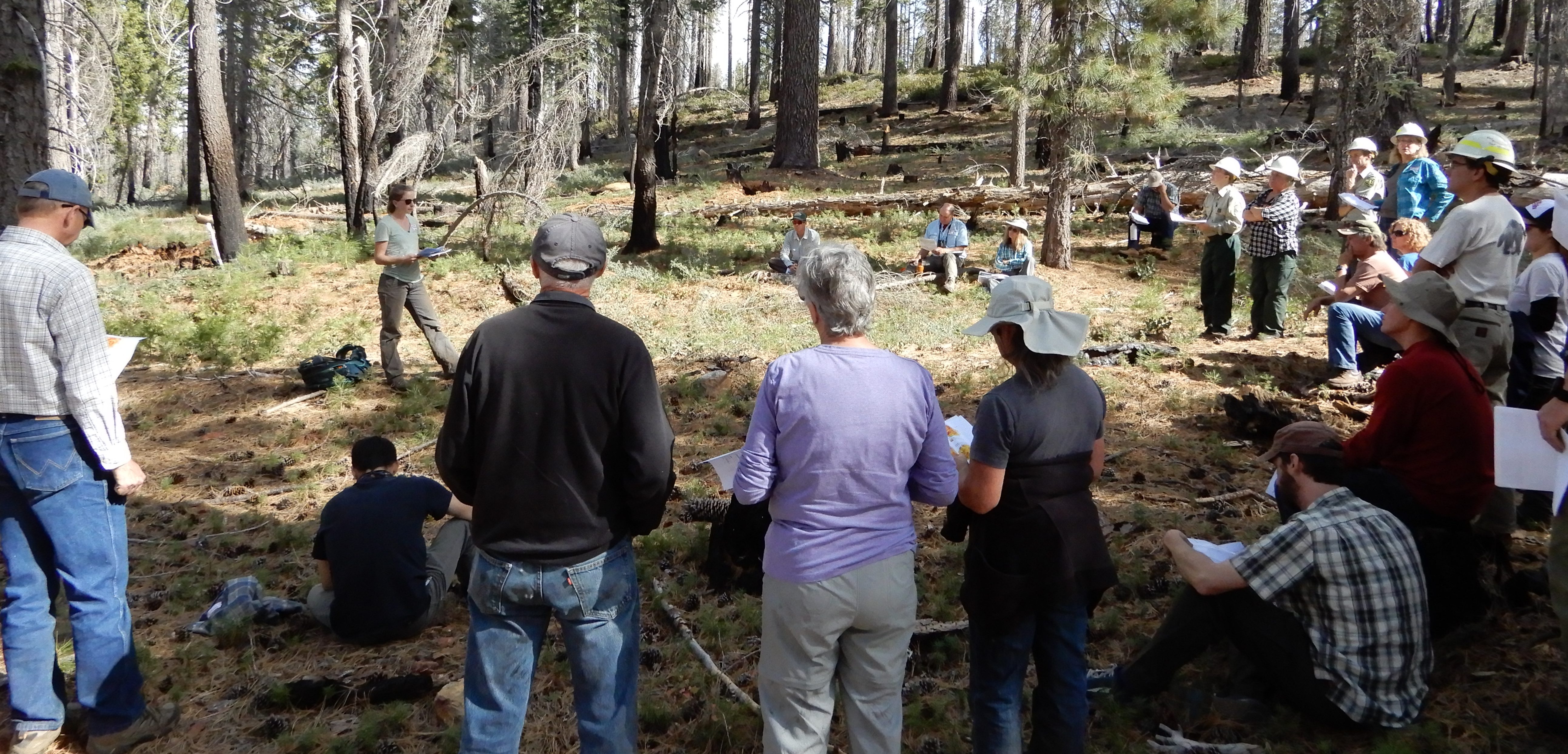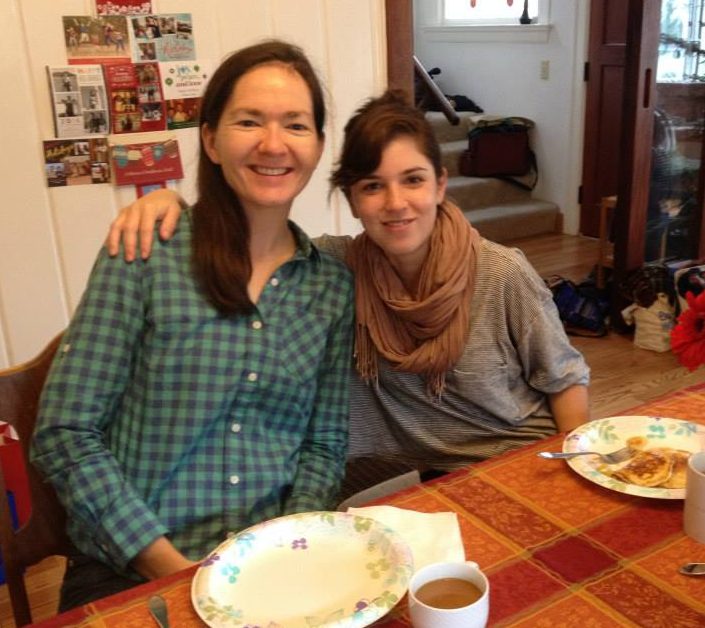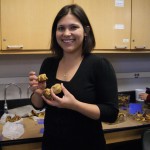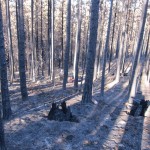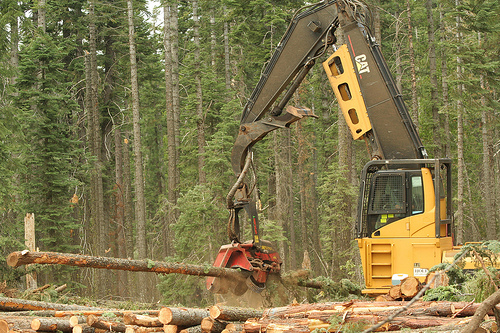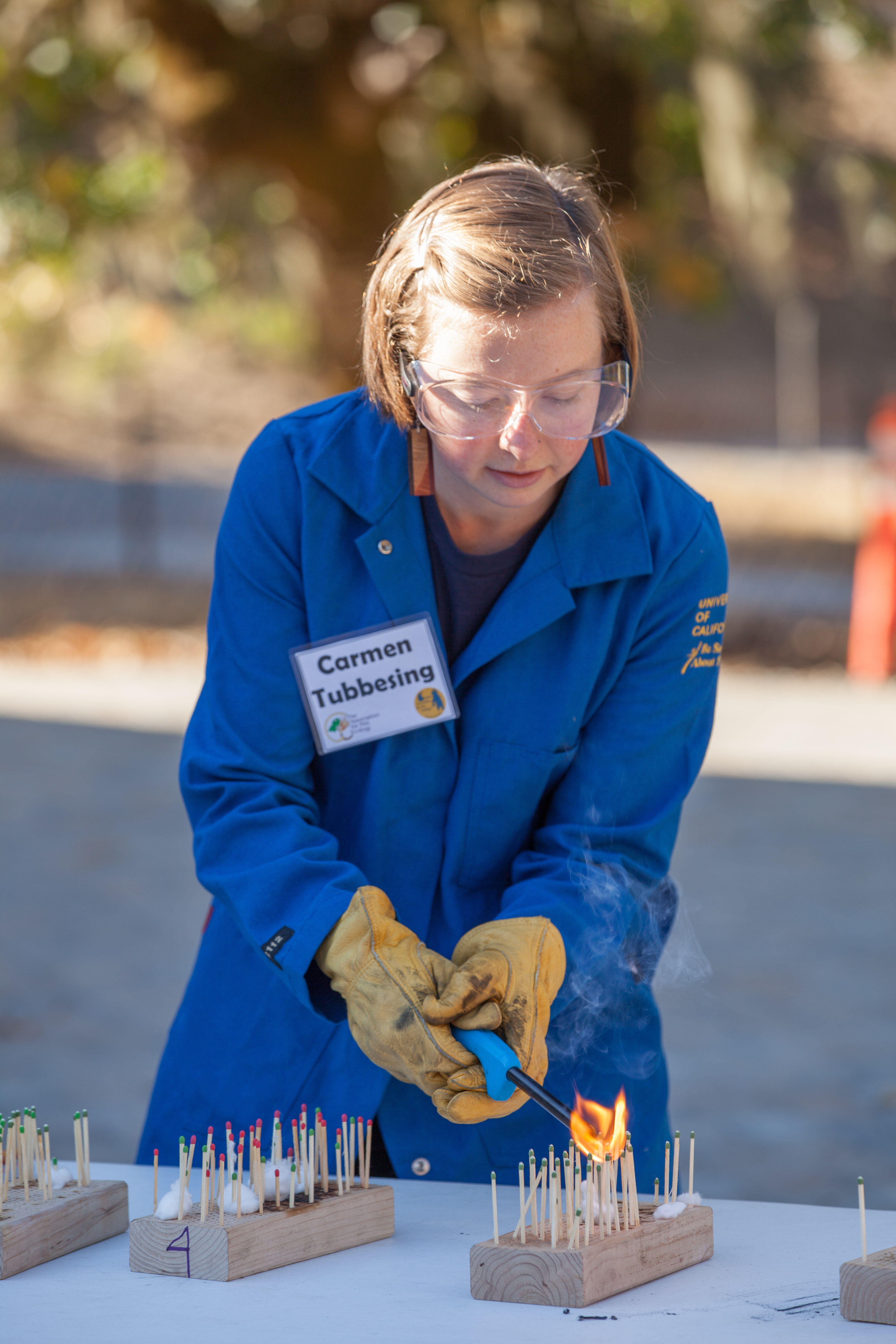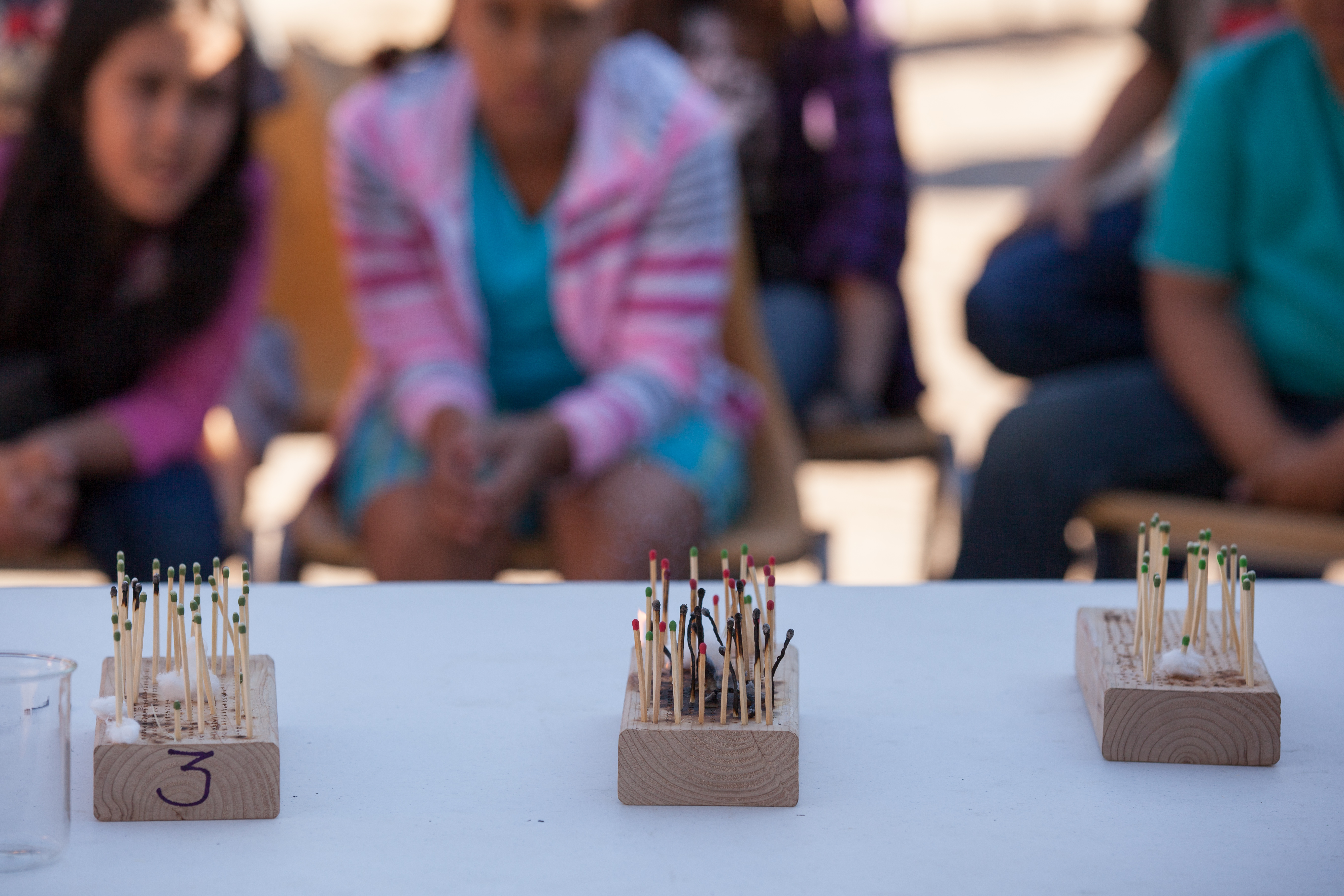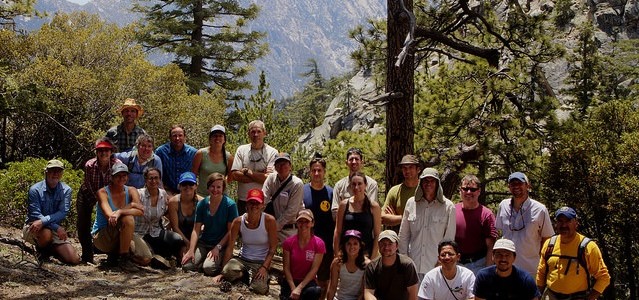Carmen Tubbesing and John Battles helped organize a field trip to the Last Chance site of the Sierra Nevada Adaptive Management Project (SNAMP) to discuss recent research results with a diverse group. There were over 30 attendees, including local Forest Service district rangers and foresters, Cooperative Extension advisors, non-profit groups, media, lumber production industry representatives, and other local stakeholders.
We visited sites that were treated with fuel reduction treatments, monitored, burned in the 2013 American Fire, and re-measured. This provided a great opportunity to learn about how fuel treatments affect forests and fire resiliency. The group discussed on-the-ground applications of forest research and the challenges that go along with it.
This field trip was possible because of the Graduate Students in Extension (GSE) fellowship, which awarded Carmen a fellowship for her to broaden the audience reached by her research results. Susie Kocher, a UC Cooperate Extension Advisor and Carmen’s GSE mentor, was instrumental in planning and executing the field trip, as was Vic Lyon, District Ranger of the American River Ranger District.
